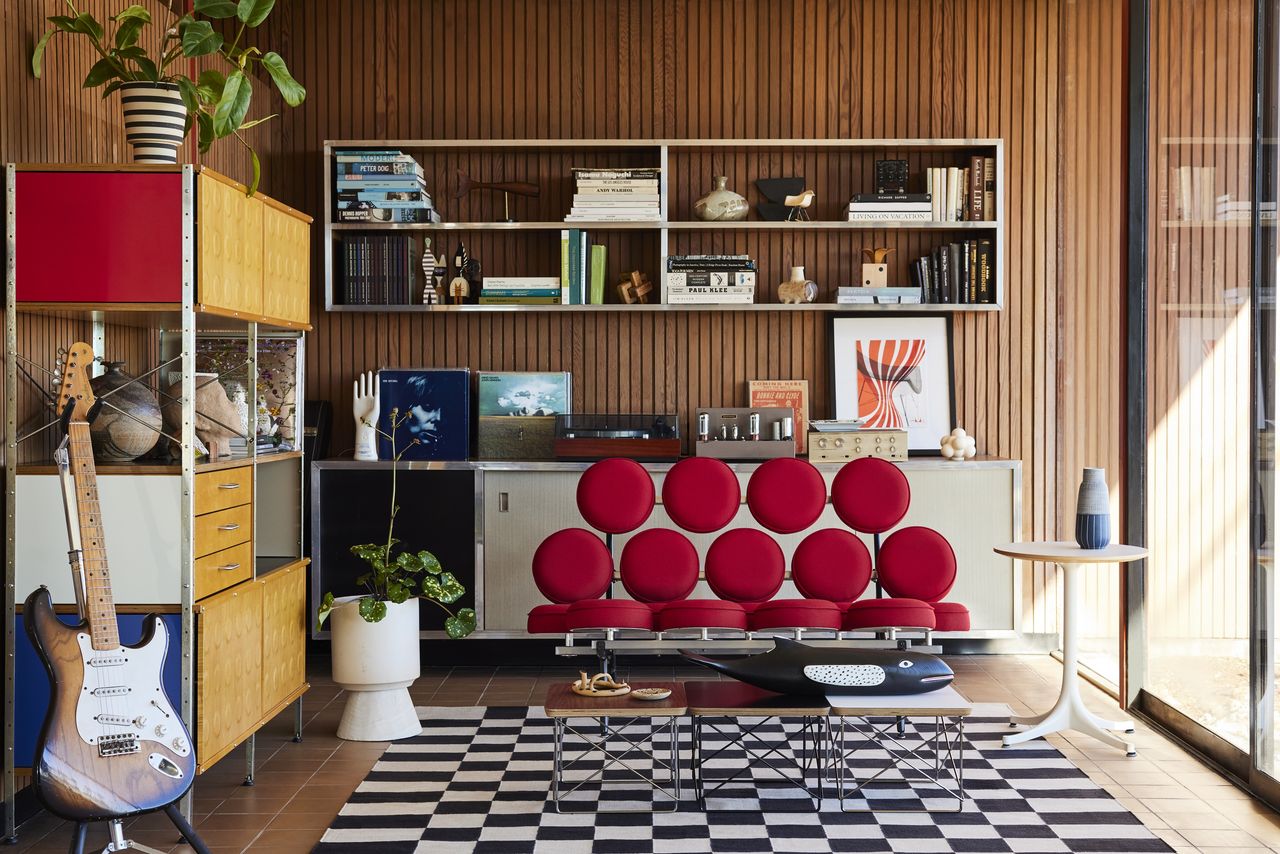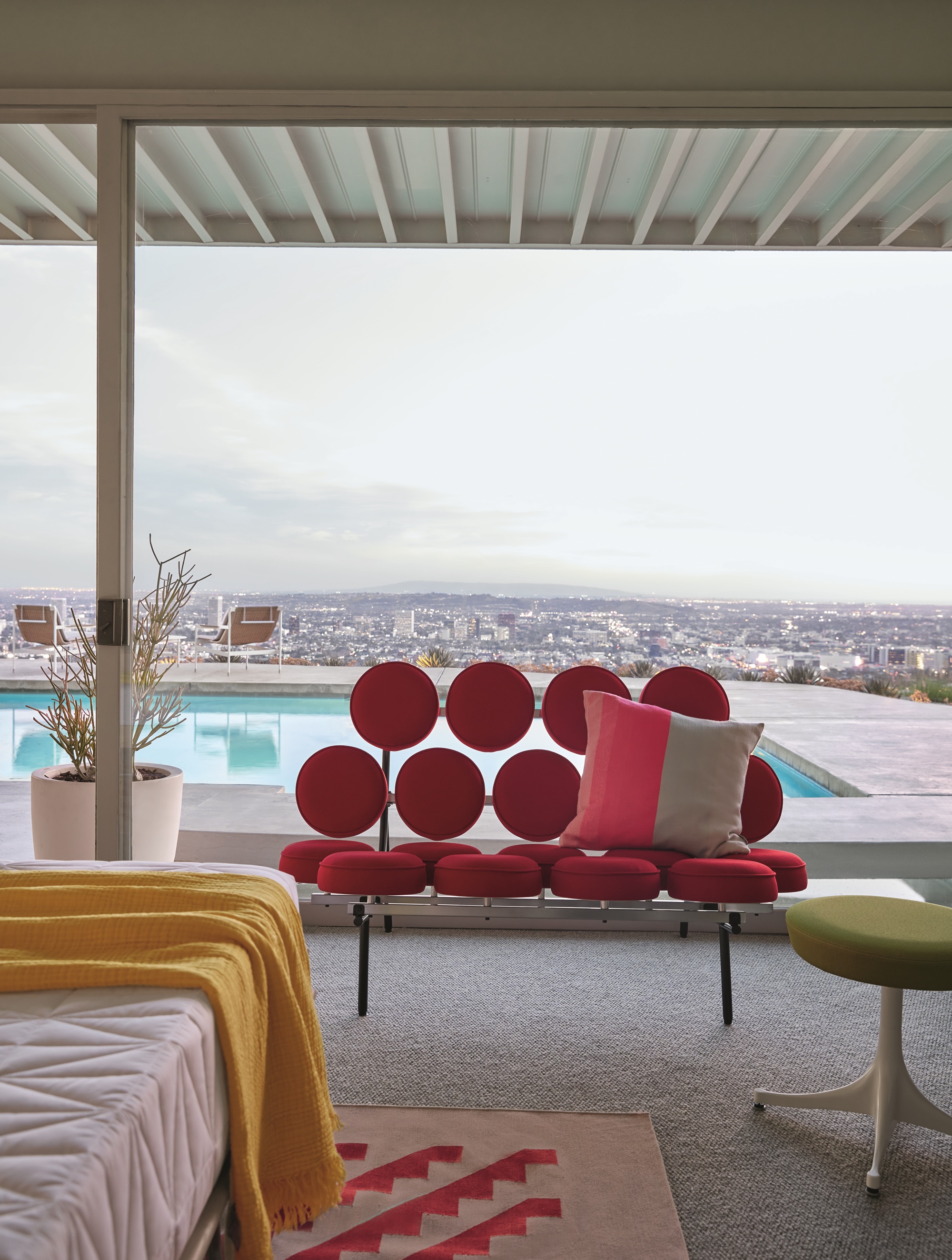
It always takes me a moment to recall exactly what the Marshmallow Sofa, a design by George Nelson for Herman Miller, looks like when I read its name — not because it isn't a design classic, but because it's one of those names that doesn't quite seem to fit the form. The name conjures images of oversized plumpness and saccharine pastels, but Nelson's Marshmallow Sofa is structured, dynamic, and punchy, by comparison.
I'd hazard a guess that a lot of people would recognize this iconic sofa — it's a unique prospect that, for good reason, hasn't widely been replicated — even if they didn't know its name. The Marshmallow Sofa became the first piece of furniture that really embraced Pop Art's sensibilities, and it serves as an example of a time when designers and manufacturers were embracing and exploring the new forms that plastic allowed them to create.
It's a design that still has cultural relevance and remains in production by MillerKnoll. I spoke to Amy Auscherman, director of archives and brand heritage at MillerKnoll, to learn a little more about its legacy.

With its almost floating discs, the Marshmallow Sofa is a feat of engineering, but how did its unique, and let's face it, out-there design come to pass? "In 1956, George Nelson and Irving Harper (the latter of which, was at the time a young designer working in Nelson’s design firm and later became the firm’s design director) were approached by an inventor who had created an injection plastic disc that he insisted could be produced inexpensively and would be durable," Amy explains. "The designers took a look and arranged 18 of them on a steel frame, creating the Marshmallow Sofa."
Easy right? Well, not necessarily, this iconic furniture's form wasn't without its problems. "The cushions turned out to be impractical, but Nelson and Harper were intrigued by the design they had created so casually," Amy says. The salesman's pitch, that the plastic discs would form a smooth vinyl surface when heated, turned out not to be the case, meaning what was meant to be an inexpensive design concept had to be reimagined, expensively. "Herman Miller agreed with the designers and decided to manufacture the sofa anyway. It is an early example of Herman Miller’s systems-based approach to making furniture."
"There is an almost 'it should have never happened' aspect of the design story," Amy explains. "The manufacturing process was cumbersome, but Herman Miller moved forward with reimagining what a sofa could be — less bulky, a work of art — and decided to produce it anyway with hand-upholstered, plywood-backed cushions, at great expense."
Sales of the Marshmallow Sofa were slow, relative to its higher price point. "Despite this, the product almost immediately became an icon of mid-century design, and we still make it today," Amy says.

In spite of these problems, its form has remained unchanged; however, just in a more limited format. "When first designed, there were two width options, and custom orders were also possible," Amy says. "The 52" version incorporates 18 cushions in a pattern of 4-5-5-4. The 103" length uses 38 cushions in a 9-10-10-9 pattern. Probably the largest produced was a custom version installed at the 1958 Brussels World’s Fair with over 100 cushions." Today, the brand only offers the 18" cushion option..
Beyond being a sofa design that has endured, it's fair to say that the Marshmallow Sofa has a deeper design legacy. "Upon its introduction, the Marshmallow sofa became an icon of mid-century modern design and the Pop Art aesthetic," Amy says, "but it also embodied an optimistic moment and triggered an aesthetic shift in the domestic landscape."







